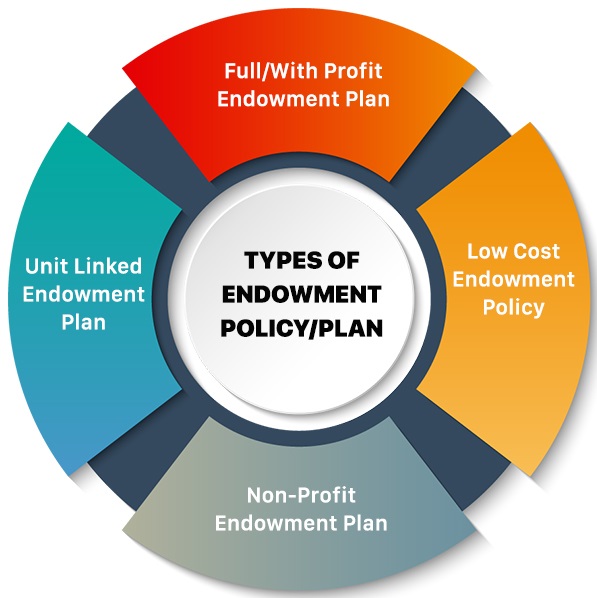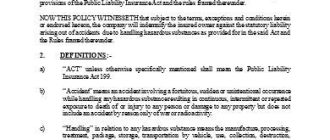
The Balance Between Policyholder and Insurance Company: An Adjuster’s Perspective.
The insurance industry plays a crucial role in protecting individuals and businesses from financial risks and uncertainties. However, finding the right balance between the interests of policyholders and insurance companies can be a challenging task. In this article, we will explore the perspective of an adjuster, a key player in the insurance claims process, and how they navigate the complex dynamics between policyholders and insurers.
An adjuster is a professional who assesses the extent of damages and determines the appropriate compensation for policyholders in the event of a claim. Their role is to ensure a fair evaluation of the damages, taking into account policy terms, coverage limits, and the specific circumstances of the claim. The adjuster serves as the middleman, responsible for investigating the claim and negotiating with the insurance company on behalf of the policyholder.
From the adjuster’s perspective, it can be a delicate balancing act to advocate for the policyholder while remaining fair and impartial to the insurance company. They must consider the policy provisions and interpret them in a way that benefits the policyholder within the bounds set by the insurance company. This requires a thorough understanding of insurance policies, industry practices, and legal regulations.
“The ultimate goal of an adjuster is to facilitate a resolution that satisfies both the policyholder and the insurance company,” says John Smith, a veteran adjuster with over 20 years of experience. “Achieving this balance requires effective communication, negotiation skills, and a deep understanding of the policy terms and conditions.”
By maintaining this equilibrium, the adjuster ensures that the policyholder receives the compensation they are entitled to and that the insurance company fulfills its obligations. This equilibrium also contributes to the overall trust and transparency in the insurance industry, fostering positive relationships between policyholders and insurers.
The Role of an Adjuster in Balancing Policyholder and Insurance Company Interests
Insurance claims can be a complex process that requires a delicate balance between the interests of the policyholder and the insurance company. As an adjuster, it is your role to navigate this balance and ensure that both parties are treated fairly.
When a claim is filed, the policyholder expects their insurance company to provide coverage and compensation for their loss. On the other hand, the insurance company has a responsibility to protect their financial interests and minimize fraudulent claims.
As an adjuster, you act as the intermediary between the policyholder and the insurance company. Your primary goal is to investigate the claim, determine the extent of the loss, and assess the policy coverage. This requires a thorough understanding of insurance policies, industry regulations, and claims processes.
You must gather all relevant information, including documentation, photographs, and statements from involved parties. This evidence will help you evaluate the validity of the claim and ensure that it aligns with the policy terms and conditions. It is important to approach this process with objectivity and integrity, considering both the policyholder’s perspective and the insurance company’s interests.
Throughout the claims process, you will need to communicate and negotiate with both parties. This involves explaining policy provisions to the policyholder, providing updates on the claim’s progress, and addressing any concerns or questions they may have. Simultaneously, you will work closely with the insurance company to present your findings, recommend claim settlements, and provide professional insights regarding coverage and liability.
It is crucial to uphold ethical standards and maintain a high level of professionalism as an adjuster. Remember, you are an advocate for fairness and must ensure that the policyholder receives the coverage they are entitled to, while also protecting the insurance company from fraudulent or exaggerated claims.
In summary, the role of an adjuster is to balance the interests of the policyholder and the insurance company. By investigating claims, assessing policy coverage, and facilitating communication, you play a pivotal role in ensuring a fair and reasonable outcome for both parties involved.
Understanding Insurance Policies: A Key Responsibility
As an adjuster, it is crucial to have a comprehensive understanding of insurance policies. It is a key responsibility to ensure that both the insurance company and the policyholder are treated fairly and that there is a balanced approach when assessing claims and determining coverage.
Insurance policies can be complex documents, often filled with legal jargon and specific terms. It is important for adjusters to thoroughly review and interpret these policies to accurately assess the coverage and limitations in each case. This understanding allows adjusters to effectively communicate with policyholders and guide them through the claims process.
By understanding insurance policies, adjusters can accurately determine the extent of coverage provided by an insurance company. This knowledge helps in making fair and informed decisions when settling claims, ensuring that policyholders are compensated as per the terms of their policy.
Moreover, an adjuster’s understanding of insurance policies is crucial in maintaining the balance between the company and the policyholder. Adjusters must be familiar with the policy’s terms and conditions to avoid potential conflicts and ensure transparency throughout the claim settlement process.
Additionally, understanding insurance policies allows adjusters to identify any potential gaps in coverage. By recognizing these gaps, adjusters can advise policyholders on additional coverage options or modifications that may better suit their needs, thus promoting a fair and equitable relationship between the policyholder and the insurance company.
| Comprehensive understanding | Ensuring fair treatment |
| Review and interpret | Accurate assessment of coverage |
| Maintaining balance | Transparent and conflict-free claims process |
| Identifying coverage gaps | Promoting fair and equitable relationships |
In conclusion, understanding insurance policies is a fundamental responsibility for adjusters. It enables them to treat both the insurance company and the policyholder fairly and achieve a balanced approach when evaluating claims and determining coverage. By having a comprehensive understanding of these policies, adjusters can accurately assess coverage, maintain transparency, and promote a strong and equitable relationship between the parties involved.
Assessing Claims Fairly and Accurately: An Adjuster’s Objective
When it comes to insurance claims, the role of an adjuster is to strike a delicate balance between the needs and expectations of the policyholder and the interests of the insurance company. From the adjuster’s perspective, the objective is clear: to assess claims fairly and accurately.
Assessing claims fairly means considering all relevant factors and information without bias. It involves carefully reviewing the policyholder’s documentation, statements, and any supporting evidence they provide. An adjuster must approach each claim with an open mind, gathering all necessary information to make a well-informed decision.
Accurate assessment is equally important. An adjuster must apply their expertise and knowledge of insurance policies to determine the validity and extent of the claim. They also need to ensure that they consider any applicable exclusions, deductibles, or limitations in the policy. Making accurate assessments requires attention to detail and a thorough understanding of the insurance industry.
To maintain the balance between the policyholder and the insurance company, an adjuster must communicate transparently and honestly. This means providing clear explanations for claim decisions and the reasoning behind them. It also involves keeping the policyholder informed throughout the claims process, answering their questions, and addressing any concerns they may have.
Furthermore, an adjuster must adhere to ethical and professional standards in their work. They should strive to make decisions that are in line with the terms of the insurance policy and industry best practices. This ensures that the claims process remains fair and unbiased, fostering trust between the policyholder and the insurance company.
| Fair assessment without bias | Ensuring policyholders receive the coverage they are entitled to |
| Accurate evaluation of claim validity | Protecting the interests of the insurance company |
| Transparent communication | Fostering trust between the policyholder and the insurance company |
| Adherence to ethical and professional standards | Maintaining a fair and unbiased claims process |
Overall, the objective of an adjuster is to assess claims fairly and accurately while navigating the complex dynamics between the policyholder and the insurance company. By doing so, they contribute to a balanced and transparent claims process that benefits both parties involved.
Exploring the Key Factors in Claim Evaluation
When it comes to evaluating insurance claims, there are several key factors that both policyholders and adjusters must consider. From the policyholder’s perspective, it is important to understand the terms and conditions of their insurance policy, as well as any exclusions or limitations that may apply. This knowledge will help them navigate the claims process and ensure that they receive the coverage they are entitled to.
On the other hand, adjusters play a crucial role in evaluating insurance claims on behalf of the insurance company. They assess the extent of the loss or damage, gather evidence and documentation, and determine the appropriate amount for compensation. Adjusters rely on their expertise and knowledge of insurance policies to make fair and accurate assessments.
One of the key factors in claim evaluation is the cause of the loss or damage. Adjusters need to determine whether the loss was caused by a covered event or if it falls under an exclusion. They carefully review the policy wording and examine any evidence or statements provided by the policyholder to make this determination.
Another important factor is the extent of the loss or damage. Adjusters assess the severity and impact of the loss, considering factors such as property damage, injuries, or financial losses. They may consult experts or specialists to help determine the value of the claim and the appropriate compensation.
Timing is also a factor in claim evaluation. Insurance policies often have specific timelines for reporting a claim and submitting supporting documentation. Adjusters need to ensure that policyholders meet these deadlines and provide all the necessary information in a timely manner. This helps expedite the claims process and prevents any unnecessary delays.
Finally, adjusters consider the credibility of the policyholder. They review the accuracy and consistency of the information provided and may conduct investigations or interviews to verify the details of the claim. This helps prevent fraud or false claims and ensures that the insurance company pays out valid claims.
In conclusion, claim evaluation is a complex process that involves various factors from both the policyholder and the adjuster’s perspective. By understanding these key factors, both parties can work together to achieve a fair and satisfactory resolution.
Negotiating Settlements: Finding Common Ground
When it comes to negotiating settlements in insurance claims, finding common ground between the insurance adjuster and the policyholder is essential. Both parties have their own interests and priorities, but striking a balance is crucial for a successful resolution.
The adjuster, representing the insurance company, is responsible for conducting a thorough investigation of the claim and evaluating the damages. They aim to protect the interests of the company and ensure a fair settlement amount. On the other hand, the policyholder is seeking compensation for their losses and wants to be adequately reimbursed.
During the negotiation process, it is important for the adjuster to listen to the policyholder’s concerns and understand their perspective. This can help build trust and rapport, which is crucial for finding common ground. The adjuster should also explain the company’s position and provide an explanation of their evaluation of the claim.
Transparency is key in negotiations. Both parties should be open and honest about their expectations, limitations, and constraints. By openly discussing these factors, it becomes easier to identify areas of agreement and work towards a mutually beneficial settlement.

Flexibility is another important aspect of negotiating settlements. The adjuster should be willing to consider alternative solutions and options to meet the policyholder’s needs while still satisfying the company’s requirements. This may involve compromise and finding creative solutions that address both parties’ concerns.
Ultimately, the goal of negotiating settlements is to find a balance between the interests of the insurance company and the policyholder. It is about reaching a fair and equitable resolution that provides adequate compensation for the policyholder while also mitigating the company’s losses.
Adhering to Legal and Ethical Guidelines
From the perspective of an insurance adjuster, it is crucial to adhere to both legal and ethical guidelines when handling claims involving policyholders and insurance companies. This ensures a fair and balanced approach that prioritizes the needs of both parties.
Legal guidelines serve as a framework for the adjuster’s actions and decisions. Understanding and following these laws and regulations not only protects the adjuster from any potential legal troubles but also ensures that the rights of the policyholder and the insurance company are respected.
When it comes to ethical guidelines, the adjuster must aim to act with integrity, honesty, and fairness. This means treating each policyholder with empathy and respect, recognizing their individual needs and concerns, and providing them with the necessary support throughout the claims process.
Additionally, the adjuster should also consider the interests of the insurance company, ensuring that they are not compromised. This involves accurately assessing claims, investigating them thoroughly, and determining the appropriate amount of compensation. It is essential for the adjuster to remain impartial and unbiased in their evaluations, always striving to reach a fair resolution that satisfies both the policyholder and the company.
By adhering to legal and ethical guidelines, the adjuster can maintain the delicate balance between the policyholder and the insurance company. This balance ensures that the interests of both parties are safeguarded and promotes trust and transparency throughout the claims process.
Challenges in Balancing Policyholder and Insurance Company Interests
As an adjuster, navigating the delicate balance between policyholder and insurance company interests can present numerous challenges. Both parties have their own unique needs and concerns, which can often be at odds with one another. Finding a fair resolution that satisfies both the policyholder and the insurance company requires careful consideration and negotiation.
One of the main challenges in this balancing act is the policyholder’s expectation of receiving full coverage and compensation for their claimed losses. From their perspective, they have been paying premiums and entrusting their financial well-being to the insurance company. When a claim is filed, they expect the insurance company to honor their policy and provide the necessary support. However, insurance companies also have their own obligation to protect their financial interests and prevent fraudulent or exaggerated claims.
Another challenge arises when determining the extent of coverage and the value of the claimed losses. Policyholders may believe that their losses are greater than what the insurance company is willing to acknowledge. Adjusters must carefully evaluate the policy terms and conditions, gather evidence, and conduct a thorough investigation to ensure a fair settlement. This often requires difficult conversations and negotiations with the policyholder, as well as a careful examination of the insurance company’s guidelines and policies.
The adjuster’s role in balancing policyholder and insurance company interests can be further complicated by external factors, such as legal requirements and regulations. Adjusters must ensure compliance with applicable laws and regulations, while also considering the interests of both parties. This can involve navigating complex legal frameworks, interpreting policy language, and making difficult decisions that adhere to the law while maintaining fairness.
Ultimately, achieving a fair balance between policyholder and insurance company interests requires effective communication, transparency, and empathy. Adjusters must listen to the concerns and needs of the policyholder and provide clear explanations of the insurance company’s position. They must also advocate for the policyholder’s rights, while also considering the financial obligations and limitations of the insurance company. Finding this equilibrium may not always be easy, but it is crucial in ensuring a satisfactory outcome for both parties involved.
Technology’s Impact on Adjusting Practices
In the ever-evolving world of insurance, technology has become a crucial component in shaping the practices of adjusters. From streamlining claim processes to enhancing accuracy in damage assessments, technology has significantly influenced the insurance industry from the adjuster’s perspective.
One of the main ways technology has impacted adjusting practices is through the use of digital tools and software. Adjusters now have access to advanced software that allows them to efficiently document and assess damages, communicate with policyholders and insurance companies, and even generate accurate estimates. This has not only improved the efficiency of the claims process but has also helped in maintaining the balance between policyholders and insurance companies.
Additionally, the use of digital tools has provided adjusters with remote work capabilities. With the ability to access and process data from anywhere, adjusters can work more flexibly and effectively. This has resulted in quicker claim resolutions and improved customer satisfaction.
Furthermore, technology has enabled adjusters to gather and analyze large amounts of data. Through data analytics, adjusters can identify trends, patterns, and potential risks more easily. This proactive approach helps insurance companies in creating policies that are tailored to meet the needs of policyholders while also managing their own risks effectively. By understanding the data, adjusters can contribute to the overall balance between insurance companies and policyholders.
Another area where technology has impacted adjusting practices is in the field of artificial intelligence (AI) and machine learning. These technologies have the potential to automate some aspects of the claims process, such as initial assessments and data analysis. While this may raise concerns about job security for adjusters, it also allows them to focus on more complex tasks that require human intervention, such as negotiating settlements or handling disputes. In this way, technology helps in maintaining the delicate balance between policyholders and insurance companies.
In conclusion, technology has had a significant impact on adjusting practices, providing adjusters with advanced tools, remote work capabilities, data analytics, and the potential for automation. While these changes may alter the roles and responsibilities of adjusters, they ultimately contribute to maintaining the balance between policyholders and insurance companies, ensuring a more efficient and fair claims process for all parties involved.
Continuing Education: Staying Up-to-Date in a Changing Landscape
In the world of insurance, staying informed and up-to-date is crucial for adjusters to maintain a balanced perspective between policyholders and insurance companies. With the constantly changing landscape of the insurance industry, ongoing education is a necessary tool to ensure that adjusters can effectively navigate the complexities of their role.
Continuing education for adjusters encompasses a wide range of topics, including new regulations, advancements in technology, and changes in the legal landscape. By staying current, adjusters can better understand the needs and concerns of both policyholders and insurance companies, enabling them to provide fair and accurate assessments.
One of the key benefits of continuing education is the opportunity to learn about industry trends and best practices. By attending seminars, workshops, and conferences, adjusters can gain valuable insights from industry experts and stay abreast of emerging issues. This knowledge allows adjusters to adapt their approaches and strategies to ensure that both policyholders and insurance companies are adequately represented.
Furthermore, continuing education fosters a sense of professionalism and commitment to the field. By investing time and effort into staying up-to-date, adjusters demonstrate their dedication to providing the best possible service to policyholders and insurance companies alike. This commitment helps maintain the delicate balance between the needs of both parties, ensuring that the claims process is fair and equitable.
In conclusion, continuing education is essential for adjusters to effectively navigate the ever-changing landscape of the insurance industry. By staying informed and up-to-date, adjusters can maintain a balanced perspective between policyholders and insurance companies, providing fair and accurate assessments. This commitment to ongoing education helps foster professionalism and ensures the highest level of service for all parties involved.
Working with Policyholders: Empathy and Communication
From the perspective of an insurance adjuster, it is crucial to find a balance between the needs of the insurance company and the policyholder. One of the most important aspects of this delicate balancing act is empathy and effective communication.
Empathy plays a vital role in the insurance industry as it allows adjusters to understand the policyholder’s situation and emotions. By putting themselves in the shoes of the policyholder, adjusters can better comprehend their needs and concerns. This understanding helps create a sense of trust between the adjuster and the policyholder, which is crucial for a successful claims process.
Effective communication is equally important in working with policyholders. Adjusters must be able to clearly explain the policies and procedures involved in the claims process. They should also be proactive in addressing any questions or concerns that the policyholder may have. By providing transparent and timely information, adjusters can help policyholders feel more confident and secure about their insurance claims.
| 1. Improved understanding of policyholders’ needs and emotions |
| 2. Building trust and establishing rapport |
| 3. Clear explanation of policies and procedures |
| 4. Proactive addressing of questions and concerns |
| 5. Increased confidence and security for policyholders |
Working with policyholders requires adjusters to navigate a careful balance between the interests of the insurance company and the needs of the policyholder. By practicing empathy and effective communication, adjusters can foster a positive and productive relationship with policyholders, ultimately leading to a smoother and more satisfactory claims process.
The Insurance Company’s Expectations of an Adjuster
From the insurance company’s perspective, an adjuster plays a crucial role in maintaining the balance between the interests of the policyholder and the company. The adjuster is responsible for assessing and evaluating insurance claims, as well as determining the appropriate coverage and settlement amounts.
One of the main expectations of an adjuster is to conduct a thorough investigation into the policyholder’s claim. This includes gathering all relevant information, such as photographs, statements, and medical records, to ensure an accurate assessment of the damages and losses.
Additionally, the insurance company expects the adjuster to possess excellent communication skills. This involves effectively communicating with the policyholder, explaining the claims process, and providing updates throughout the investigation. Clear and concise communication helps to build trust between the policyholder and the insurance company.
Another important expectation is that the adjuster demonstrates a fair and unbiased approach. They must evaluate each claim objectively and make decisions based on the relevant policy provisions and industry standards. This ensures that both the policyholder and the insurance company are treated fairly throughout the claims process.
The insurance company also expects the adjuster to be knowledgeable and up-to-date on the latest laws, regulations, and industry practices. This allows them to accurately interpret insurance policies and provide sound recommendations to the company and policyholders.
Finally, the adjuster is expected to provide prompt and efficient claims handling. This means managing multiple claims simultaneously, adhering to established timelines, and resolving disputes in a timely manner. Meeting these expectations helps maintain the balance between the policyholder’s interests and the insurance company’s obligations.
Looking Ahead: Improving and Streamlining Adjusting Processes
As an adjuster, it is important to strike a balance between the needs and expectations of the policyholder and the company. It is crucial to ensure that the policyholder is provided with fair and efficient service, while also considering the interests and obligations of the insurance company.
One way to achieve this balance is by constantly seeking ways to improve and streamline the adjusting processes. By implementing technological advancements, such as digital claims platforms and automated evaluation tools, adjusters can enhance efficiency and accuracy in their work.
Using digital claims platforms allows adjusters to access and process policyholder information quickly and easily. This not only saves time but also improves the overall customer experience. Policyholders can submit claims online, track the progress of their claims, and communicate with adjusters directly through these platforms.
Furthermore, automated evaluation tools can assist adjusters in assessing the extent of damage and calculating claim settlements. These tools can analyze various factors, such as the policyholder’s coverage, the severity of the damage, and any applicable deductibles or limits. By automating this process, adjusters can eliminate human error and ensure fair and accurate settlements.
However, it is important to remember that technology should not replace the human element in the adjusting process. A personal touch and effective communication are still vital in providing top-notch service to policyholders. Adjusters should maintain open lines of communication and be empathetic to the needs and concerns of policyholders, while also representing the interests of the insurance company.
Looking ahead, it is crucial for adjusters to continue exploring ways to improve and streamline adjusting processes. By striking the right balance between policyholder needs and company obligations, adjusters can ensure fair and efficient service while upholding the integrity and objectives of the insurance industry.
undefined
What is the role of an insurance adjuster?
An insurance adjuster is responsible for assessing and evaluating insurance claims on behalf of the insurance company. They investigate the circumstances of a claim, gather evidence, interview witnesses, and determine the amount of compensation the policyholder is entitled to.
How do insurance adjusters determine the amount of compensation for a claim?
Insurance adjusters determine the amount of compensation for a claim by carefully reviewing the policy, assessing the damages or loss, and considering any applicable deductibles or exclusions. They may also consult with industry experts, review similar cases, and use various tools and formulas to calculate the appropriate compensation.
What are some challenges faced by insurance adjusters?
Insurance adjusters often face challenges such as fraudulent claims, conflicting accounts of the incident, or insufficient evidence to support the claim. They also have to balance the interests of the policyholder and the insurance company, ensuring a fair and equitable resolution.
How can policyholders ensure a fair claims process?
Policyholders can ensure a fair claims process by providing complete and accurate information about the incident, cooperating with the insurance adjuster’s investigation, and promptly reporting any changes or developments related to the claim. It is also helpful for policyholders to review their insurance policy and understand their rights and coverage before filing a claim.






